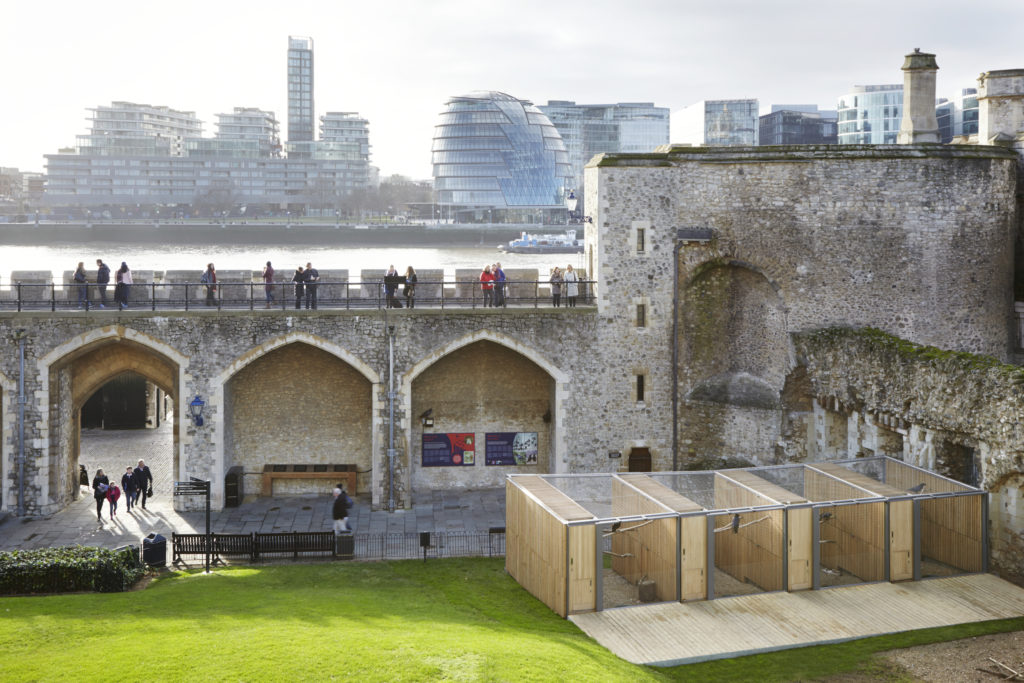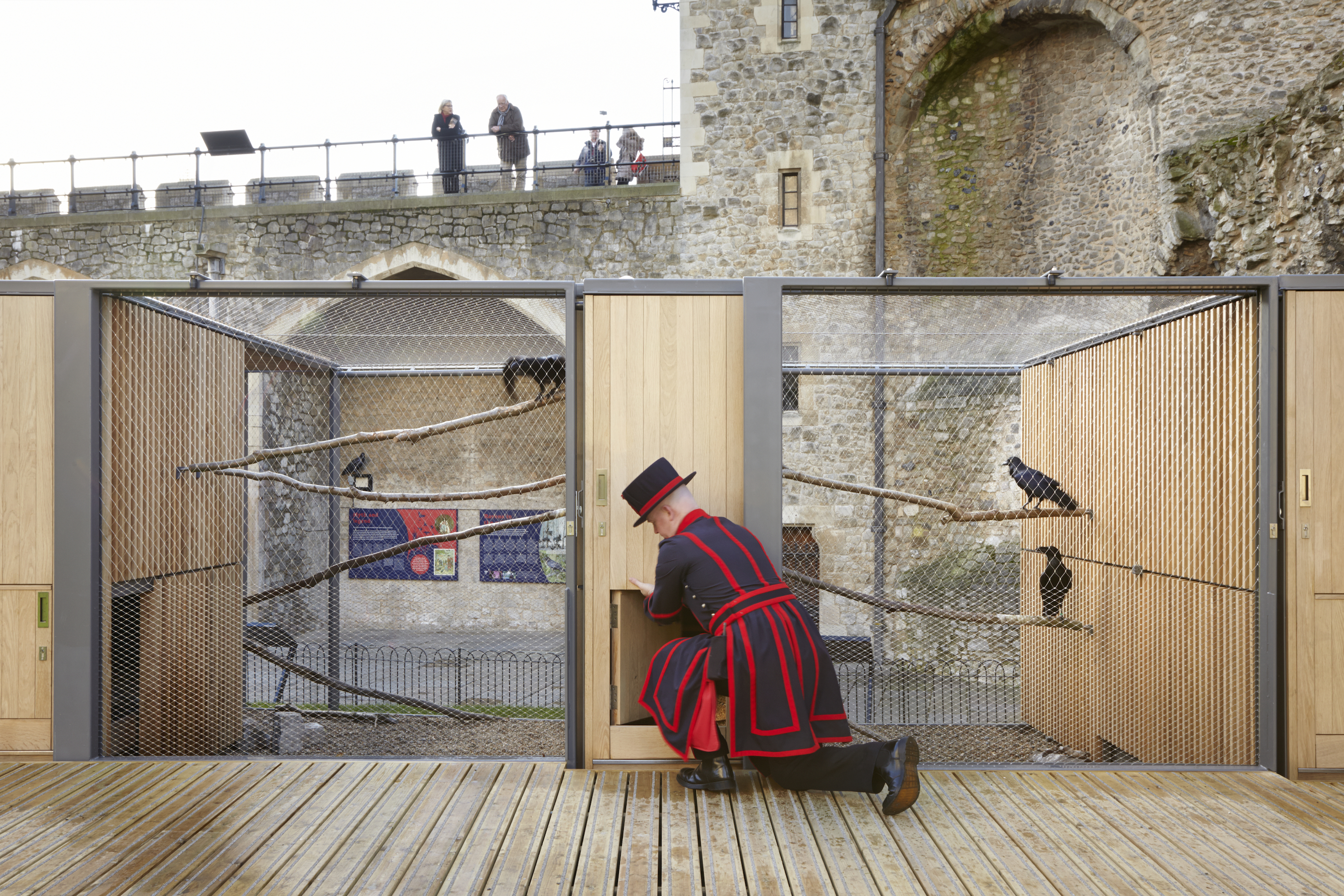Legend has it that the kingdom will fall should the ravens ever leave the Tower of London. It was extra important therefore to provide a safe and comfortable new habitat for the iconic birds – one that was sensitive to its historic environment and enhanced their role as a visitor attraction. With a careful and collaborative approach required, the JCT – Constructing Excellence Contract provided the contract solution.
The ravens of the Tower of London are an important part of British cultural folklore and history, and a feature of one of our most historic buildings. In creating a new enclosure for the ravens, there were three important considerations: one – to provide a safe and clean night accommodation; two – to minimise the impact visually (in terms of design and materials) and physically (in terms of the construction process) on the surrounding historic fabric; three – to improve the facility as part of an overall series of enhancements to provide increased educational and public engagement.
To achieve these objectives, special consideration was given to both design and construction. Every detail, in terms of materials selected, method of construction, design, and accessibility has been carefully thought out to ensure the welfare of the animals, protect and enhance the visibility of the ravens against the historic background, and promote greater public engagement.
The brief and design for the project was developed in consultation with Historic Royal Palaces, the independent charity that cares for the Tower of London, the Ravenmaster and with specialist input from the Zoological Society of London. The design of the enclosure was evolved through a process of simplification and refinement. By using restrained detailing and selecting materials to ensure durability and low maintenance, the structure is able to work in harmony with a UNESCO World Heritage Site and Scheduled Ancient Monument.

The frame for the enclosure is created with a series of English oak slatted structures. Oak was used specifically because of its reference to the historic use of the same material in construction on the historic site. Each section contains the ravens’ night boxes and frames the open space between them, against the White Tower. Slatted sliding gates provide access to the open areas of the enclosures, allowing them to open on one another, whilst maintaining transparency through. The night boxes are also crafted from oak, with small, finely detailed wicket gates. As the ravens are allowed free reign of the tower during the day, openings in the rear allow the birds free access. Tensioned stainless steel netting forms the caging of the enclosure. These are woven with two different types of weave pitch. A tight weave at the base prevents foxes from penetrating the enclosure, whilst a wider weave is used above to maximise transparency.
Maintaining transparency was particularly important as it was desired to show the ravens in their setting against the Tower – allowing them to be visible to the public at all times. This also applied to the roof of the enclosure, as the ravens are highly visible from the Wall Walk and the White Tower steps above. The height of the enclosure was designed to align with the adjacent lawn. Building on the public access, the setting includes an area of decking designed for an expanded programme of educational talks and workshops.
Putting together the project required a great deal of collaboration – between the client, architect, contractor and numerous specialist craftspeople. Due to the archaeological presence on the site, it was necessary to be flexible with the type and position of the foundations. As such, the enclosure has been constructed to be free-standing from the historic fabric. Much of the design was developed to be fabricated off-site, meaning that public access could continue throughout the construction phase, and this also minimised the impact of having a prolonged on-site presence.
With the need to be flexible during construction, utilise a range of specialist crafts and skills, be sensitive to the public, and to work within the site of such an ancient and protected building, such a project requires a concerted effort from all parties to be open, collaborative, and share risks and challenges equally. By using the JCT – Constructing Excellence Contract, the client is provided with a framework to ensure that all parties are in a position to achieve full partnering. This helps to enable an open and collaborative approach. Much like the enclosure itself, the JCT CE contract is a support within which work can be carried out with full transparency.
Project Details
Start: February 2015
Completion: July 2015
Floor area: 50m2
Contract: JCT – Constructing Excellence Contract
Architect: Llowarch Llowarch Architects
Client: Historic Royal Palaces
Structural Engineer: Hockley and Dawson Consulting Engineers
Quantity Surveyor: Historic Royal Palaces
Specialist Steelwork: N H Ricketts Engineering Ltd
Contractor: Ward & Co (Building Conservation Ltd)
Stainless Steel Mesh: MMA Architectural Systems
Electrical Contractor: P J Oliver Electrical Services

